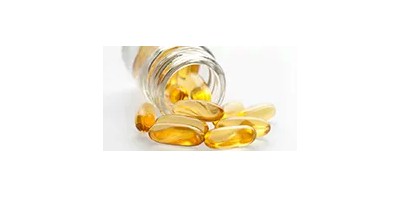Antioxidant
Vitamin E is an antioxidant. It may help protect your cells from damage. This essential nutrient occurs naturally in many foods. It’s also available as a dietary supplement. Sometimes, it’s in processed foods. Vitamin E is fat-soluble. This means your body stores and uses it as needed.
The term “vitamin E” describes eight different compounds. Alpha-tocopherol is the most active one in humans.
Longer cell life
You’ve probably seen rust on your bike or car. A similar process of oxidation and accelerated aging takes place in your body when cells are exposed to molecules called free radicals. Free radicals weaken and break down healthy cells. These molecules may also contribute to heart disease and cancer.
Free radicals form as a result of normal body processes. They cause damage that shortens the life of your cells. Vitamin E is a powerful antioxidant that may help reduce free radical damage and slow the aging process of your cells, according to the National Institutes of Health (NIH).
More research
Researchers have investigated the use of vitamin E as treatment for a variety of degenerative diseases, including:
Studies so far have failed to show a reduction in the incidence of these conditions, according to the Mayo Clinic. There is a lack of proven medical uses for vitamin E aside from treating vitamin E deficiency, which is a rare condition.
Extra protection
Vitamin E may help people with higher environmental or lifestyle risk factors. Free radicals are increased by:
- cigarette smoking
- exposure to air pollution
- high exposure to ultraviolet rays from sunlight
Vitamin E may help repair damaged cells.
It’s difficult to consume too much vitamin E in your regular diet. It’s neither risky nor harmful to obtain vitamin E from food sources.
Supplements: Don’t go overboard
While overdosing on food-based vitamin E is unlikely, the NIH reports that taking high doses of this vitamin in supplement form can cause serious side effects. One serious side effect is an increased risk of hemorrhagic stroke.
Dosages shouldn’t exceed 1,000 international units (IUs) per day if you’re using synthetic supplements. The recommended daily allowance (RDA) for ages 14 and up is 15 milligrams (mg).
Check My Remedy Shop for the WIN Vitamin Label.
The label
The two types of vitamin E available as supplements are the natural form, which is d-alpha-tocopherol and the synthetic form, which is dl-alpha-tocopherol. The natural form is slightly more biologically active. For this reason, the RDA is 22.4 IUs. The RDA of the synthetic form is 33.3 IUs.
Check the label to determine which form of vitamin E you have. Information on the label can help you make sure you’re getting the appropriate dosage.
Ways to get your E
The following foods are good sources of vitamin E:
- dry roasted sunflower seeds, 1 ounce (oz.), which provides 7.4 mg of vitamin E
- dry roasted hazelnuts, 1 oz., which provides 4.3 mg of vitamin E
- dry roasted peanuts, 1 oz., which provides 2.2 mg of vitamin E
- dry roasted almonds, 1 oz., which provides 6.8 mg of vitamin E
- spinach, boiled, 1/2 cup, which provides 1.9 mg of vitamin E
- broccoli, chopped and boiled, 1/2 cup, which provides 1.2 mg of vitamin E
- kiwifruit, 1 medium-sized, which provides 1.1 mg of vitamin E
- mango, sliced, 1/2 cup, which provides 0.7 mg of vitamin E
- tomato, raw, 1 medium-sized, which provides 0.7 mg of vitamin E
Extra vitamin E
One easy way to get enough vitamin E in your diet is to add a tablespoon of wheat germ oil to a recipe. Alternatively, you can snack on sunflower seeds. This will provide over 20 mg of vitamin E, which is more than a full day’s requirement. Make a kale or spinach salad, and toss in some hazelnuts to get a crunchy boost of vitamin E. Getting creative will help you reap the many benefits of vitamin E in your diet.
This article was condensed from Healthline for Dr. David Jensen
